Edale Mill Cottages STW (2022)
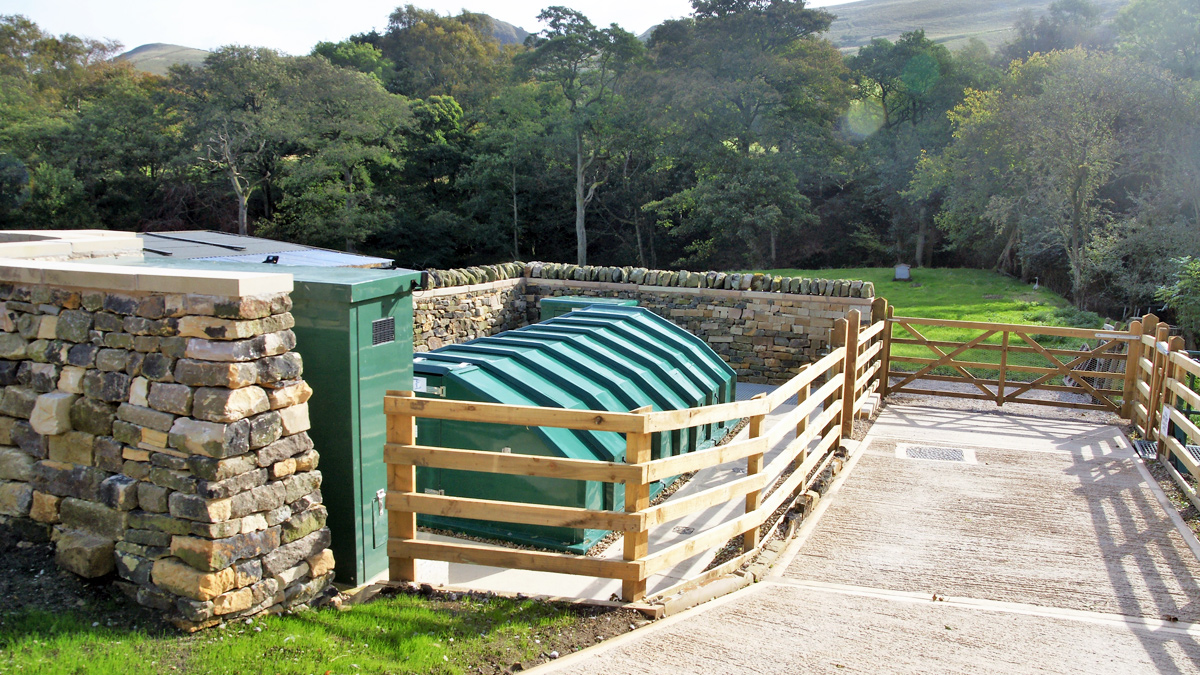
Edale STW: New RBC and shared access road - Courtesy of MWH Treatment
Edale Mill Cottages Sewage Treatment Works is located in the heart of the Peak District National Park and serves a small community comprising 29 properties. The asset expired biofilter works and septic tank was process and hydraulically undersized and had been a source of odour complaints for the close neighbours for a number of years. The filter was housed in a steel shed but had failed to contain the odour nuisance, so an alternative solution was required to remove the smell. Additional complications for the project’s delivery were posed by a small site footprint and its location next to the steep riverbank of the River Noe, which had ongoing issues of erosion, threatening the viability of the works and its access track. With the site located between customers’ properties, the focus of the team was to provide a new works with low visual and operational impact for the local community and National Park visitors alike, both during and after construction.
Solution choice
Solution options for site included catchment transfer to another works or an on-site rebuild. The closest alternative treatment site capable of accepting the load is Bradwell STW. However, being 5km away, the on-site solution was the lowest whole life cost, but the site constraints meant that effectively delivering a solution on site was not straightforward.
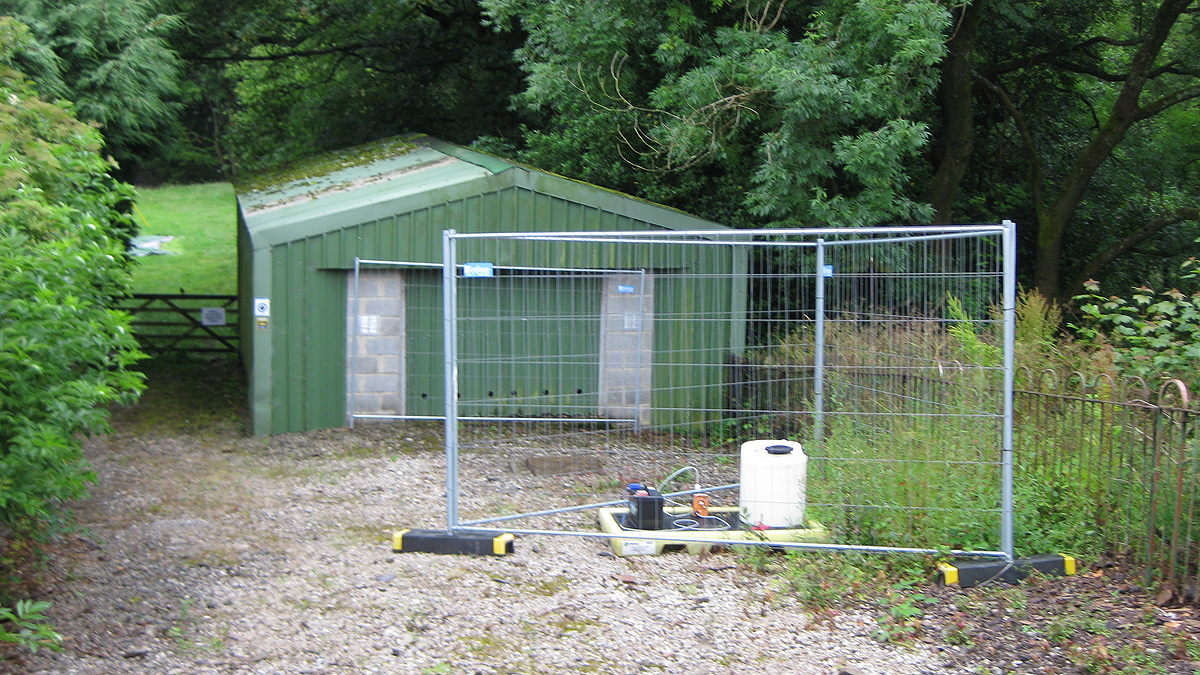
The existing Edale STW – Courtesy of MWH Treatment
To fully develop construction methodology, slope remediation options and to quantify costs to confirm the project’s viability, Severn Trent engaged MWH Treatment early in the project life cycle to undertake a proactive early contractor involvement (ECI) project. The integrated design and delivery team developed the required solution and how it would be built. This whole life cost optioneering demonstrated that, even with the construction constraints at the site, the on-site option was the best whole life solution.
The design team selected a Tuke & Bell rotating biological contactor (RBC) as the process unit for the 65 population equivalent sewage flows. Equipment performance was targeted at a nominal 60 mg/l suspended solids, 40 mg/l BOD effluent load at a maximum peak flow of 75.6m3/day.
Ground stabilisation
The existing site access road was being undermined by erosion undercutting the riverbank and threatening a succession of tree collapses jeopardising the site’s viability. The slope itself varied from 3.5m to 7m high with slope angles between 40° and 60°. Some areas had been over-steepened through undercutting causing previous instability. The design team reviewed options to stabilise the riverbank with three options being reviewed including:
- Riprap armour to the slope base only.
- Gabion baskets at the base/up the maximum 7m high slope.
- Soil nailing/rock anchor ground supported mesh with natural hemp netting above a riprap base stabilisation.
Option 3 was chosen on commercial and environmental best value through the ECI phase.
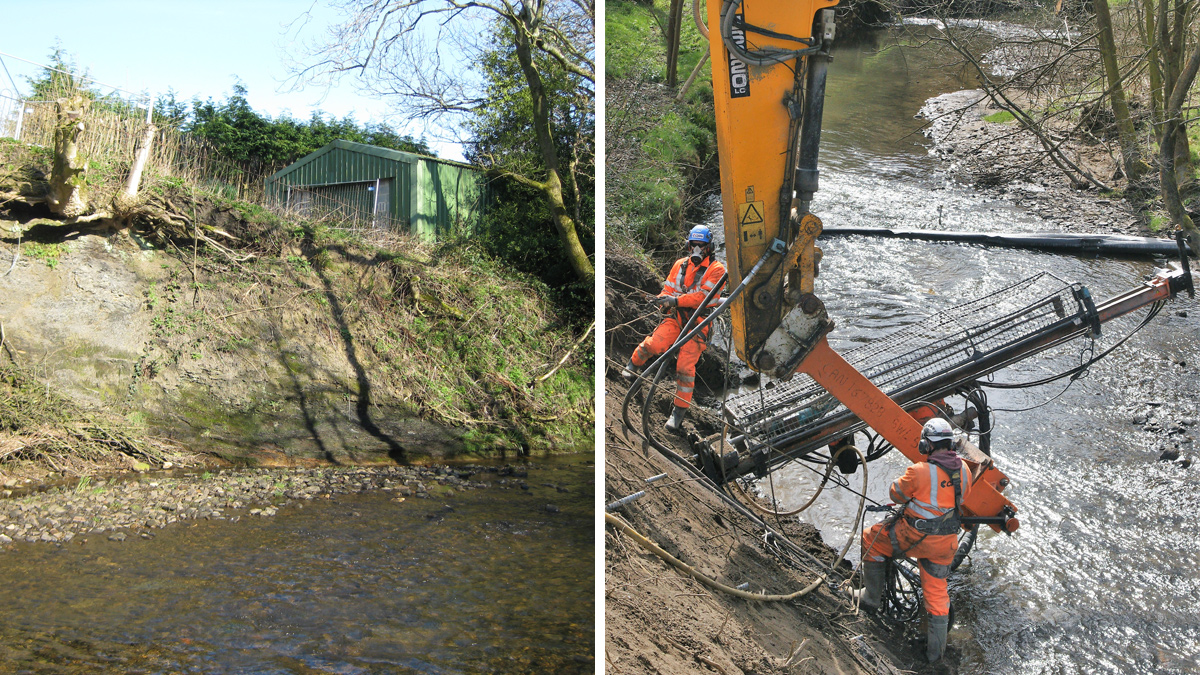
(left) Riverbank prior to stabilisation and (right) CAN Geotechnical undertaking slope stabilisation work – Courtesy of MWH Treatment
At the detailed design stage, and working with specialist services provider CAN Geotechnical, a solution was developed to address the typically made-ground over weathered Bowland shale mudstone. The soil nailing design included distributed vehicle loading assumptions on the access road.
The soil nails chosen were DYWI hollow bar system which is a fully threaded self-drilling system incorporating a sacrificial drill bit to enable simultaneous drilling and grouting without the need for casing. The R32-280 bar chosen will provide the 60-year design life in the ‘high aggressivity’ ground.
A 3D geosynthetic mat was provided for erosion control with a pre-seeded coir fibre to meet local National Park seeding specifications. Toe erosion control included rock roll mattresses which were installed vertically on the slope and keyed into the riverbed. In total, the team inserted 187 soil nails up to 7m long, 500m2 of rockfall netting with coir matting and 50 linear metres of scour protection at the foot of the matting.
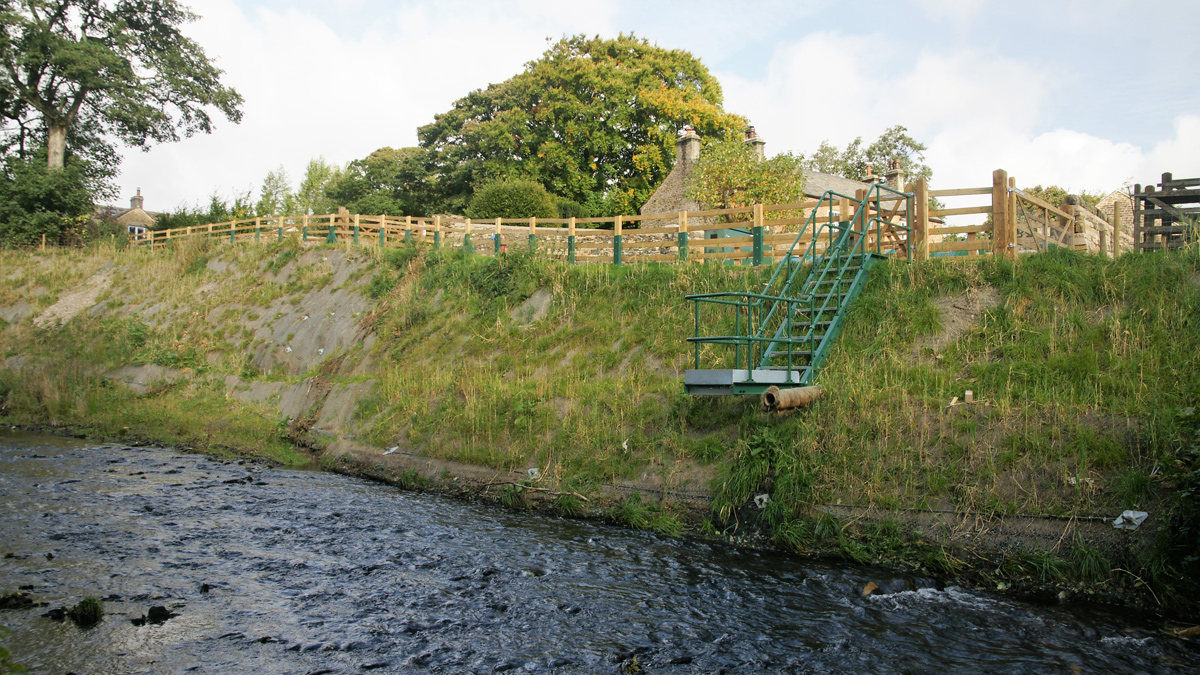
Completed slope stabilisation – Courtesy of MWH Treatment
Constructability
The small site footprint necessitated the replacement assets to be constructed over the existing site footprint. Temporary working process solutions were developed with Severn Trent, as part of an overall constructability review. The temporary process stream included settlement followed by existing biological media placed into temporary buried tank structures. Process checks were undertaken throughout construction to ensure the site remained compliant.
To maintain efficient progress, the construction team and design teams developed a cofferdam approach for the RBC excavation with the sheet piling acting as a sacrificial shutter. This ensured the excavation was stable against the lateral loads from the bank stabilisation excavator tracking next to the cofferdam.
Supply chain
- Project delivery: MWH Treatment
- Ground stabilisation & soil nailing: CAN Geotechnical
- Rotating biological contactor: Tuke & Bell
- MCC: Total Automation & Power
- Drystone walls: Heart in Stone
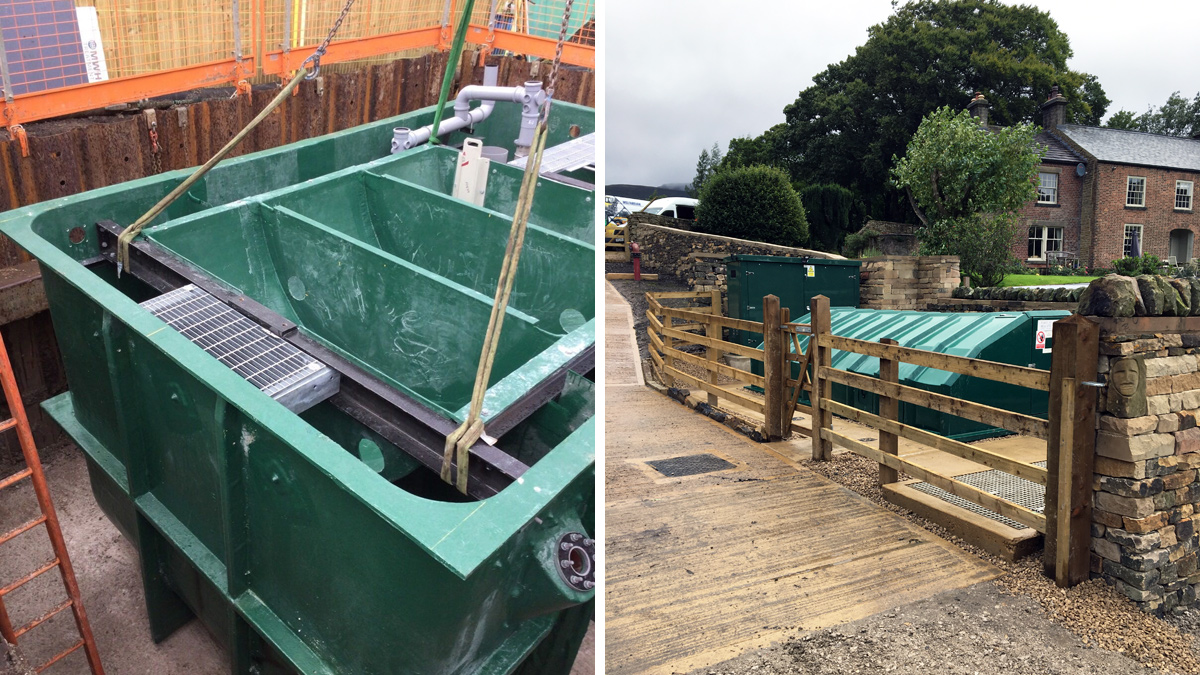
(left) RBC installation in cofferdam with sacrificial piles and (right) the completed works – Courtesy of MWH Treatment
Community engagement
Engaging the local community was essential for the effective delivery with a narrow roadway access off a country lane. Complimenting conventional communications, the team established a virtual communication group with local residents, enabling rapid information flow for key deliveries of plant and equipment as well as a forum for questions and concerns.
Mitigations embedded in the design for the longer term visual amenity of the solution included wooden post and rail fencing to shroud steel bollard road edge protection; tinted concrete agreed with the planning authority; temporary protection to a listed gatepost; extensive high quality drystone walling and a net 15.9% improvement in biodiversity driven from the river bank work; all for which the client, Severn Trent, awarded the MWH Treatment project team a Customer Excellence Award in recognition.
Conclusion
The new works was successfully commissioned in August 2021 and the project represents a significant success for Severn Trent and MWH Treatment, achieving a legacy of high-quality, low-cost sewage treatment for customers for many years to come.




